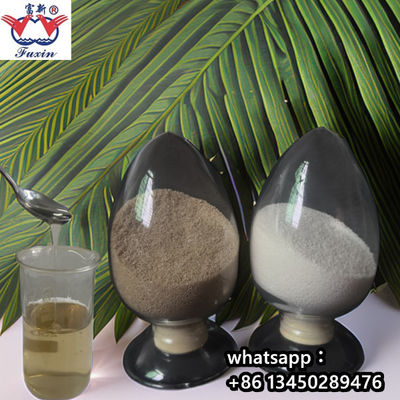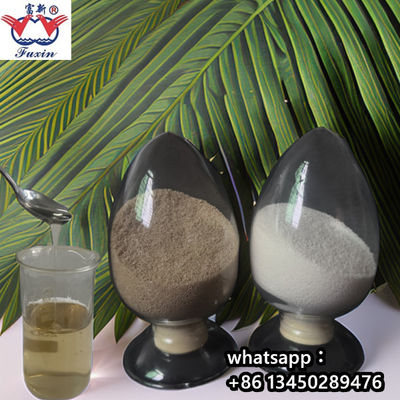Product Description:
Textile Printing Paste is an essential component in the textile industry. It is a specially formulated mixture composed of pigments, dyes, thickeners, binders, and other additives. The purpose of this mixture is to transfer colors onto the fabric surface accurately and evenly, while providing the necessary viscoelastic properties to ensure that the paste adheres to the fabric during printing.
The addition of thickeners is an essential step in producing Textile Printing Paste. Thickeners, such as pigment printing thickeners or reactive printing thickeners, are used to control the paste's viscosity and to ensure that it produces sharp and well-defined patterns and designs. The binder component of the paste is responsible for binding the pigment to the base fabric and it helps to keep the color stable and in place.
The combined effects of these components result in a product that is reliable, accurate, and allows for the creation of beautiful and vibrant printed designs on fabric surfaces.
Features:
Sodium Carboxymethyl Cellulose Aqueous Solution:
Sodium carboxymethyl cellulose aqueous solution is clear, transparent and very homogeneous, boasting excellent stability. Moreover, its viscosity is not affected by mechanical force so it remains unchanged even with pump cycles or stirring. This solution is highly tolerant to temperature and bacteria, so it can be taken in at any time for production needs.
This solution has great viscosity and film-forming properties that make it ideal for producing smooth, resistant and flexible films on the warp surface. It can also endure the intense strength, activity and friction of weaving machines. Therefore, it is a great tool for producing intricate high-grade materials at high speeds.
The yarn treated with sodium carboxymethyl cellulose aqueous solution dries quickly and yields a glossy appearance with a soft feel. Desizing is also made easier without the need for additional chemical agents.
Yarn count and fabrics treated with this solution remain unstained and free of mildew. Thus, materials with spots or greasy dirt are virtually eliminated, meaning the risk of damage by worms or rats is greatly reduced.
Compared to the use of starch, this solution requires no intricate machinery or complicated control systems, making it ideal for simplifying workshop requirements and enhancing production capacity of weaving machines. Moreover, it helps to improve workshop sanitation and the maintenance of machinery.
Performance of Ultra High DS CMC


Left pic:Dyed color granular CMC 2% solution Right pic: The left is standard product made in Italy. The middle and right are Fuxin different types of CMC.
Specification
| TYPE |
Degree of Substitution (DS) |
Viscosity
(Brookfield,1%soln.,20℃)
|
pH |
Moisture |
Particle Size |
| 10H |
1 |
2500-3000cps |
6.5-8.5 |
≤15% |
20-70 mesh |
| 13H |
1.3 |
1500-2500cps |
| 15H |
1.5 |
1000-2000cps |
| 18H |
1.8 |
800-1600cps |
| Y002 |
2 |
800-1500cps |
| Y230 |
2.3 |
600-1000cps |
*Kindly contact us for specification and information about any specific grade of CMC other than mentioned in the above table.
Powder or granular available, we recomed customer to purchase the brown granle type CMC to sell as sodium alginate for higher profit.
Technique Process
▲Dissolve the dyes and add into the paste, make the color paste with thickener→▲Printing→▲Drying (100 ℃)→▲Baking or steaming→▲Washing→▲Soaping→▲Rinsing→▲Post treatment procedure.
Dissolution Methods and Proportion:
How to make the paste?
1. The ratio depends on DS level, low DS product should mix with pure sodium alginate to reach a better performance, while ultra high DS product can 100% replace SA.
2. Proportion: same as sodium alginate original paste preparing. Firstly add 65% water, stir the water while adding the product evenly and slowly, then speed up the stirrer for 20-25 minutes. And then add the remaining 35% water, stir for another 20-30 minutes. Leave for 15 minutes.
How to make sure the paste dissove completely?
1. Powder and water completely fuse, not exist solid-liquid separation phenomenon.
2. Paste is dissolved evenly, the surface is smooth, no granular objects.
Applications:
Apparel Manufacturing
Textile Printing Paste is extensively used in apparel manufacturing for adding decorative patterns and designs to garments. It provides a versatile way to create visually appealing prints on various types of fabrics, such as cotton, silk, polyester, and blends. These prints can be applied by using different techniques, including screen printing, roller printing, or digital printing, to make the garments more aesthetically attractive and marketable.
Home Textiles
In addition to apparel manufacturing, Textile Printing Paste is utilized in the production of home textile products, such as bed linens, curtains, upholstery fabrics, and tablecloths. This paste can be used to print a variety of intricate and decorative patterns that give the textiles an elegant and personalized touch in home decor.
Promotional Products
Textile Printing Paste is also used in the production of promotional products, like bags, caps, and t-shirts. Such items can be printed with logos, slogans, and graphics to provide a memorable branded experience for consumers. The paste ensures that the prints are accurately and durably applied to these promotional products, thus enhancing their overall visual impact and brand recognition.
Support and Services:
We provide technical support and services for our Textile Printing Paste products. Our team of experts is available to answer any questions you may have and provide advice on how to best use our products. We also offer on-site training and assistance with installation and setup. Additionally, we provide troubleshooting and repair services if needed. Contact us today for more information and to get started with our Textile Printing Paste.
Packing and Shipping:
Packaging and Shipping for Textile Printing Paste:
The product will be packaged in a sealed container, and shipped in a cardboard box with protective packaging material inside. The box will be labeled with a warning that the contents are flammable and should be kept away from open flames and extreme temperatures. The box will include a shipping label with the destination address and a barcode for tracking the shipment.

 Your message must be between 20-3,000 characters!
Your message must be between 20-3,000 characters! Please check your E-mail!
Please check your E-mail!  Your message must be between 20-3,000 characters!
Your message must be between 20-3,000 characters! Please check your E-mail!
Please check your E-mail! 



